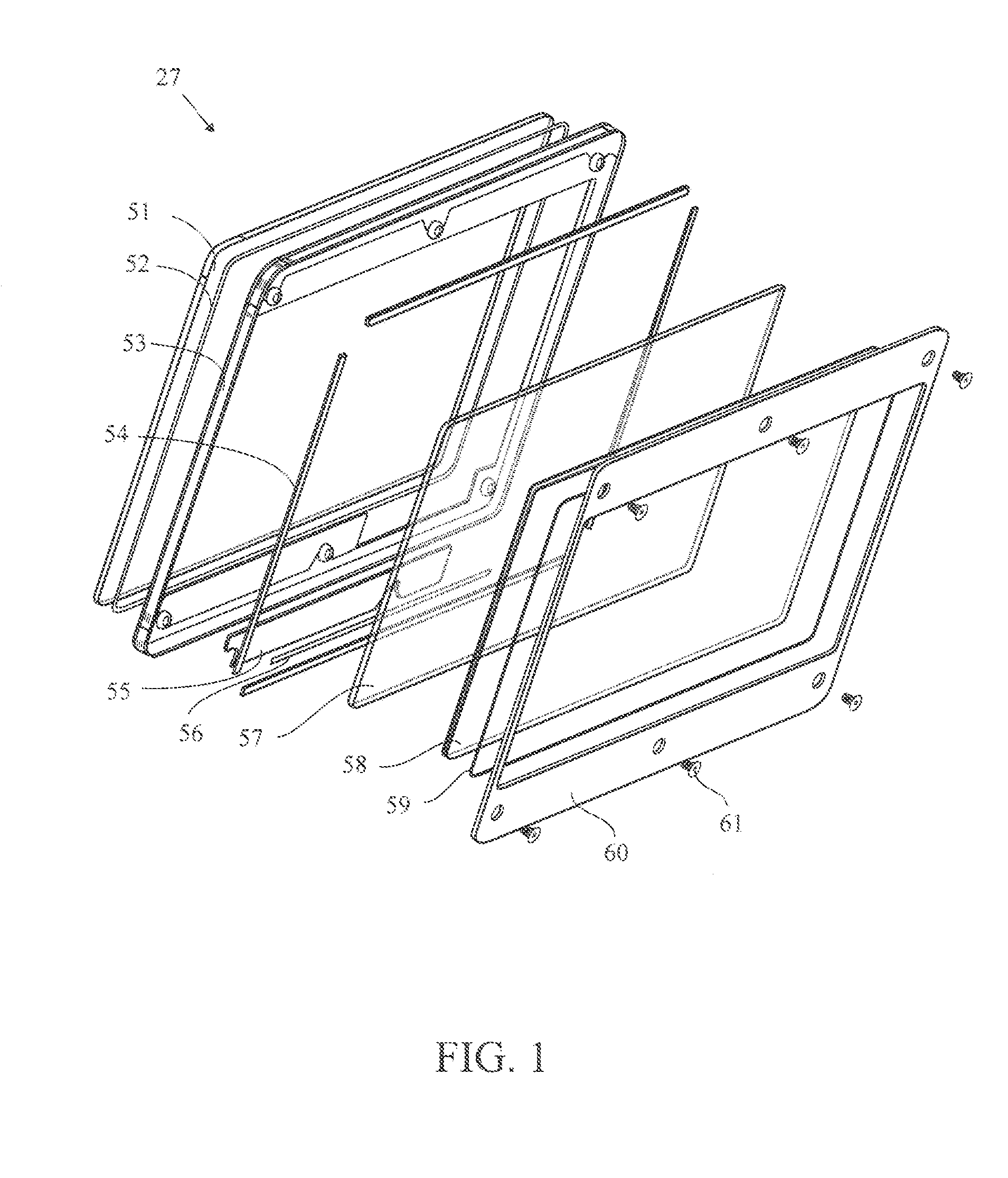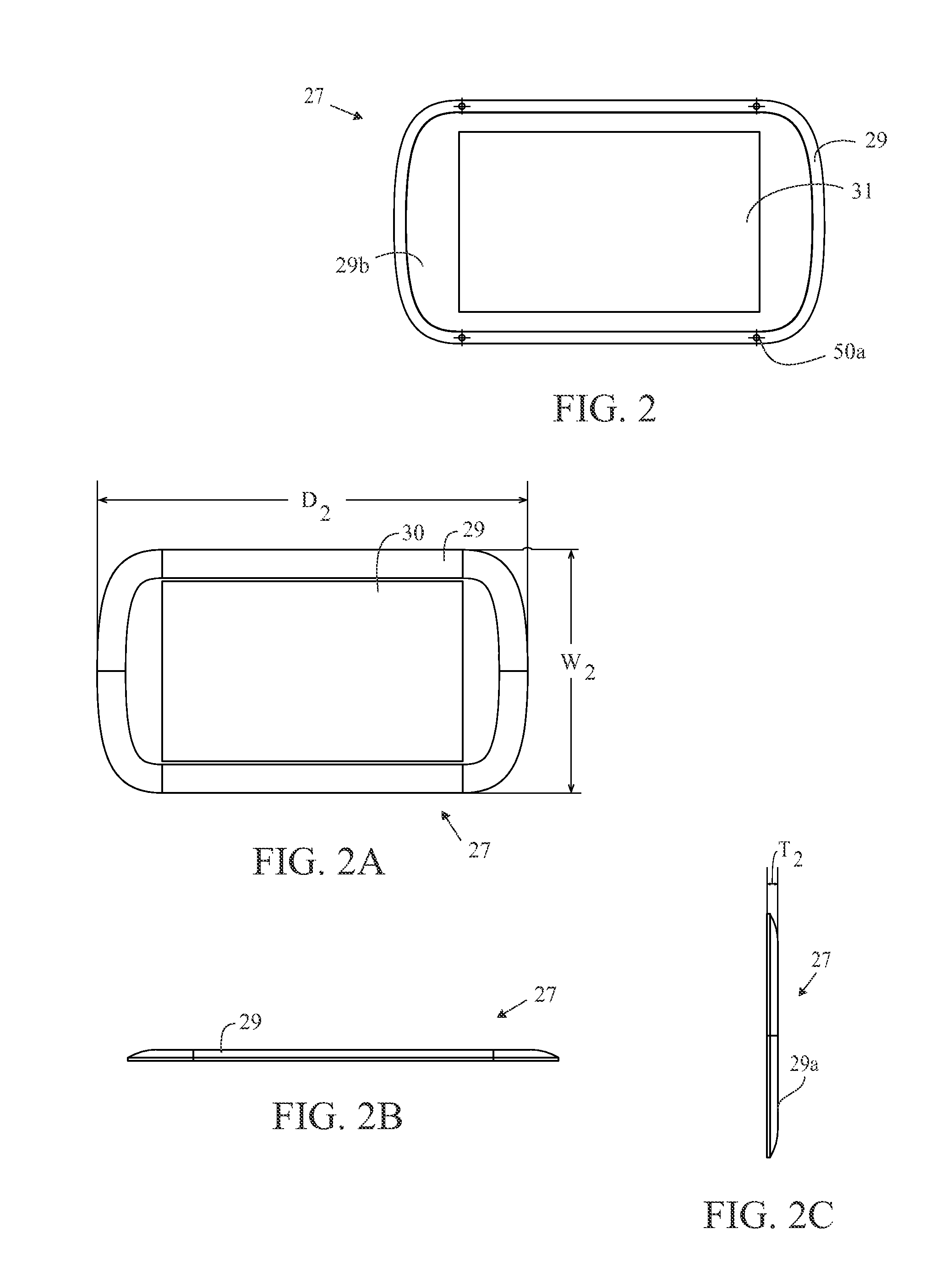Touchscreen with a light modulator
a technology of light modulator and touch screen, which is applied in the field of touch screen, can solve the problems of no keyboard, vocabulary is at odds with the classic keyboard, and destroying the illusion of using the device like a book, so as to improve the feel of the keyboard during us
- Summary
- Abstract
- Description
- Claims
- Application Information
AI Technical Summary
Benefits of technology
Problems solved by technology
Method used
Image
Examples
Embodiment Construction
[0041]An exploded view of a preferred embodiment of a touchscreen unit 27 of a device 25 is shown in FIG. 1. The touchscreen unit 27 preferably comprises a touchscreen surface 51, a first VHB adhesive 52 for attaching the touchscreen surface 51 to a main body 53, a sensor LED 54, a main PCBA 55, an elastomeric connector 56, a liquid crystal cell 57, a protective surface element 58 adhered with a second VHB adhesive 59 to a protective plate 60, wherein a plurality of screws 61 are threaded through a plurality of apertures to connect the components of the touchscreen unit 27.
[0042]FIGS. 2, 2A, 2B and 2C illustrate various isolated views of the touchscreen unit 27. The touchscreen unit 27 preferably has a thickness T2, as shown in FIG. 2C that ranges from 4 millimeters (“mm”) to 10 mm, more preferably from 5 mm to 8 mm, and most preferably 6 mm. The touchscreen unit 27 preferably has a width W2 that ranges from 100 mm to 200 mm, more preferably from 110 mm to 150 mm, and most preferabl...
PUM
 Login to View More
Login to View More Abstract
Description
Claims
Application Information
 Login to View More
Login to View More - R&D
- Intellectual Property
- Life Sciences
- Materials
- Tech Scout
- Unparalleled Data Quality
- Higher Quality Content
- 60% Fewer Hallucinations
Browse by: Latest US Patents, China's latest patents, Technical Efficacy Thesaurus, Application Domain, Technology Topic, Popular Technical Reports.
© 2025 PatSnap. All rights reserved.Legal|Privacy policy|Modern Slavery Act Transparency Statement|Sitemap|About US| Contact US: help@patsnap.com



